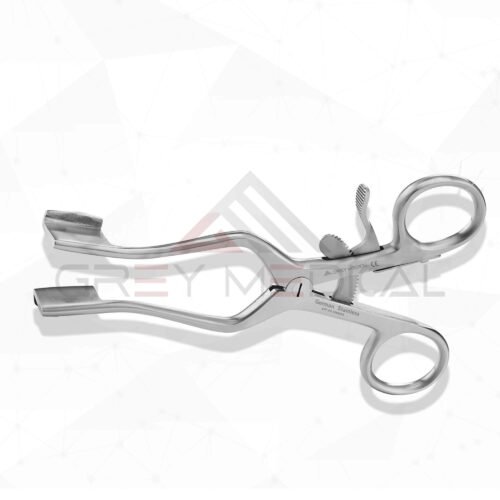A Vital Tool in Modern Surgical Procedures
Wiki Article

In the operating room, precision and reliability are paramount. Surgeons depend on a wide array of specialized tools to perform procedures safely and effectively. One such indispensable device is a self-retaining retractor, crucial for providing clear visibility and access to the surgical site without requiring an assistant to hold it in place. This allows the surgical team to work more efficiently, particularly in procedures involving soft tissue and small, deep incisions. Understanding the design and function of weitlaner surgical instrument highlights the innovation driving modern surgery forward.
The Anatomy of an Essential Retractor
This specific retractor is easily identifiable by its unique design. It features two blades, each with a set of sharp or blunt prongs that curve outwards. These prongs are designed to securely grip tissue and hold it back, creating an open field for the surgeon. The handles incorporate a ratchet lock mechanism, which allows the instrument to be opened to the desired width and then locked into place. This self-retaining feature is the surgery tool primary advantage, freeing up the hands of the surgical team. The weitlaner surgical instrument is a prime example of ergonomic and functional design in medical technology.
Common Applications in Surgery
The versatility of this retractor makes it a staple in various surgical specialties. It is frequently used in orthopedic procedures, such as joint repairs and bone work, where holding back muscle and tissue is essential. In neurosurgery, it provides access to the spine, and in plastic and reconstructive surgery, it is invaluable for delicate tissue handling. Its application also extends to general and vascular surgery, where maintaining a clear view of small vessels or organs is critical. The design of the weitlaner surgical instrument makes it particularly useful for procedures on extremities, the neck, and other areas requiring shallow tissue retraction.
Variations and Customization
To meet the diverse needs of different surgical procedures, this instrument comes in several variations. The prongs can be either sharp, for tougher tissues, or blunt, for more delicate structures where piercing is undesirable. The number of prongs on each blade can also vary, typically ranging from two to four. Additionally, they are available in different lengths and sizes to accommodate incisions of various dimensions. This adaptability ensures that surgeons have the right tool for the specific anatomical area and tissue type they are working with. The careful engineering of each weitlaner surgical instrument reflects a commitment to surgical excellence.
GreyMedical®: A Commitment to Quality
The performance of any surgical tool is directly linked to the quality of its manufacturing. Companies like GreyMedical® specialize in crafting high-quality surgical instruments that surgeons can trust. As a privately owned medical technology company, GreyMedical® is dedicated to innovation and excellence. The precision required to forge a reliable weitlaner surgical instrument from high-grade stainless steel demonstrates this commitment. This focus ensures that each tool offers durability, corrosion resistance, and the ability to withstand repeated sterilization cycles, making it a reliable asset in any surgical setting.
Conclusion
From its intelligent self-retaining mechanism to its varied applications across multiple specialties, this retractor is a fundamental component of the modern surgical toolkit. Its thoughtful design enhances efficiency and safety in the operating room, allowing surgeons to perform with greater precision and confidence. The ongoing innovation from dedicated manufacturers ensures that the weitlaner surgical instrument will remain a trusted and essential device for years to come, embodying the blend of form and function that defines superior medical equipment.
Report this wiki page